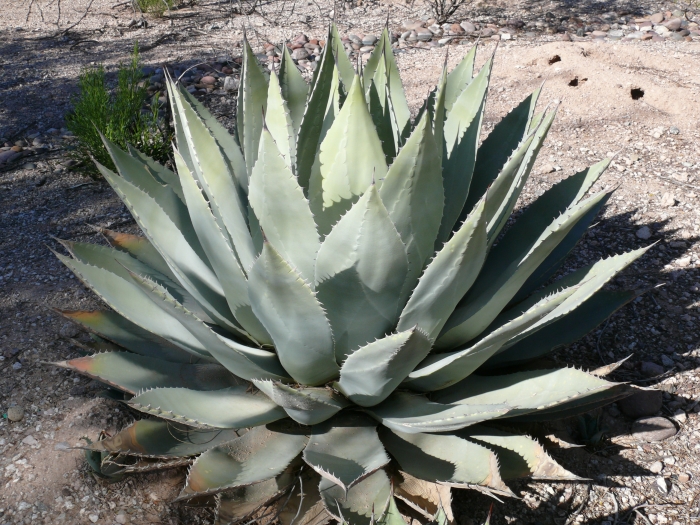Artichoke Agave
(Agave parryi var. huachucensis)
Artichoke Agave (Agave parryi var. huachucensis)
/
/

Sue in az
Public domain
Image By:
Sue in az
Recorded By:
Copyright:
Public domain
Copyright Notice:
Photo by: Sue in az | License Type: Public domain | License URL: https://creativecommons.org/public-domain/ | Uploader: Sue in az~commonswiki | Publisher: Wikimedia Commons | Title: Huachuca_agave.JPG | Notes: {{Information |Description={{en| A farmer walks towards [[w:sisal|sisal]] plantations in the outskirts of [[w:Morogoro|Morogoro]], Tanzania. Tanzania is the world's second largest sisal producer. The [[w:Uluguru Mountains|Uluguru Mountains can be seen in |











































Estimated Native Range
Summary
Agave parryi var. huachucensis, commonly known as Artichoke Agave, is an evergreen succulent native to the high desert grasslands and mountainous regions of the Southwestern USA and Northwest Mexico. It typically grows to a height of 1-2 feet (0.3-0.6 meters) and a width of 2-3 feet (0.6-0.9 meters). This plant forms rosettes of thick, silver-blue leaves with a distinctive spine at the tip, giving it an artichoke-like appearance. The leaves may also have white markings or "bud prints" from where they were pressed against each other in the bud stage. Artichoke Agave blooms once in its lifetime, producing a tall stalk with yellow flowers in the spring and summer, which are quite showy and attract pollinators such as bees and hummingbirds.
Artichoke Agave is valued for its drought tolerance and striking form, making it a popular choice for xeriscaping, rock gardens, and as a focal point in drought-tolerant landscapes. It is also used in container gardening due to its manageable size. This agave prefers full sun exposure and requires very low water once established, thriving in well-drained soils. It is cold hardy to about -10 degrees Fahrenheit, making it suitable for cultivation in USDA zones 5 through 10. While generally disease-free, it can be susceptible to root rot if overwatered. After flowering, the main rosette dies, but the plant often produces offsets or "pups" that can be replanted.CC BY-SA 4.0
Artichoke Agave is valued for its drought tolerance and striking form, making it a popular choice for xeriscaping, rock gardens, and as a focal point in drought-tolerant landscapes. It is also used in container gardening due to its manageable size. This agave prefers full sun exposure and requires very low water once established, thriving in well-drained soils. It is cold hardy to about -10 degrees Fahrenheit, making it suitable for cultivation in USDA zones 5 through 10. While generally disease-free, it can be susceptible to root rot if overwatered. After flowering, the main rosette dies, but the plant often produces offsets or "pups" that can be replanted.CC BY-SA 4.0
Plant Description
- Plant Type: Succulent
- Height: 1-2 feet
- Width: 2-3 feet
- Growth Rate: Slow
- Flower Color: Yellow
- Flowering Season: Spring, Summer
- Leaf Retention: Evergreen
Growth Requirements
- Sun: Full Sun
- Water: Very Low, Low
- Drainage: Fast
Common Uses
Bee Garden, Bird Garden, Drought Tolerant, Fire Resistant, Groundcover, Hummingbird Garden, Low Maintenance, Rabbit Resistant, Rock Garden, Street Planting
Natural Habitat
High desert grasslands and mountainous regions
Other Names
Common Names: Huachuca Agave
Scientific Names: , Agave parryi var. huachucensis, Agave huachucensis, Agave applanata var. huachucensis,
GBIF Accepted Name: Agave parryi var. huachucensis (Baker) Little